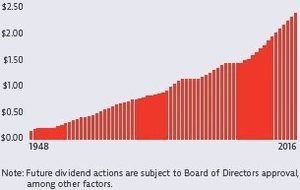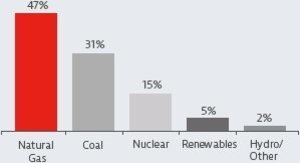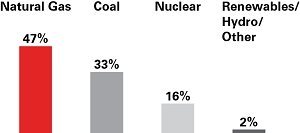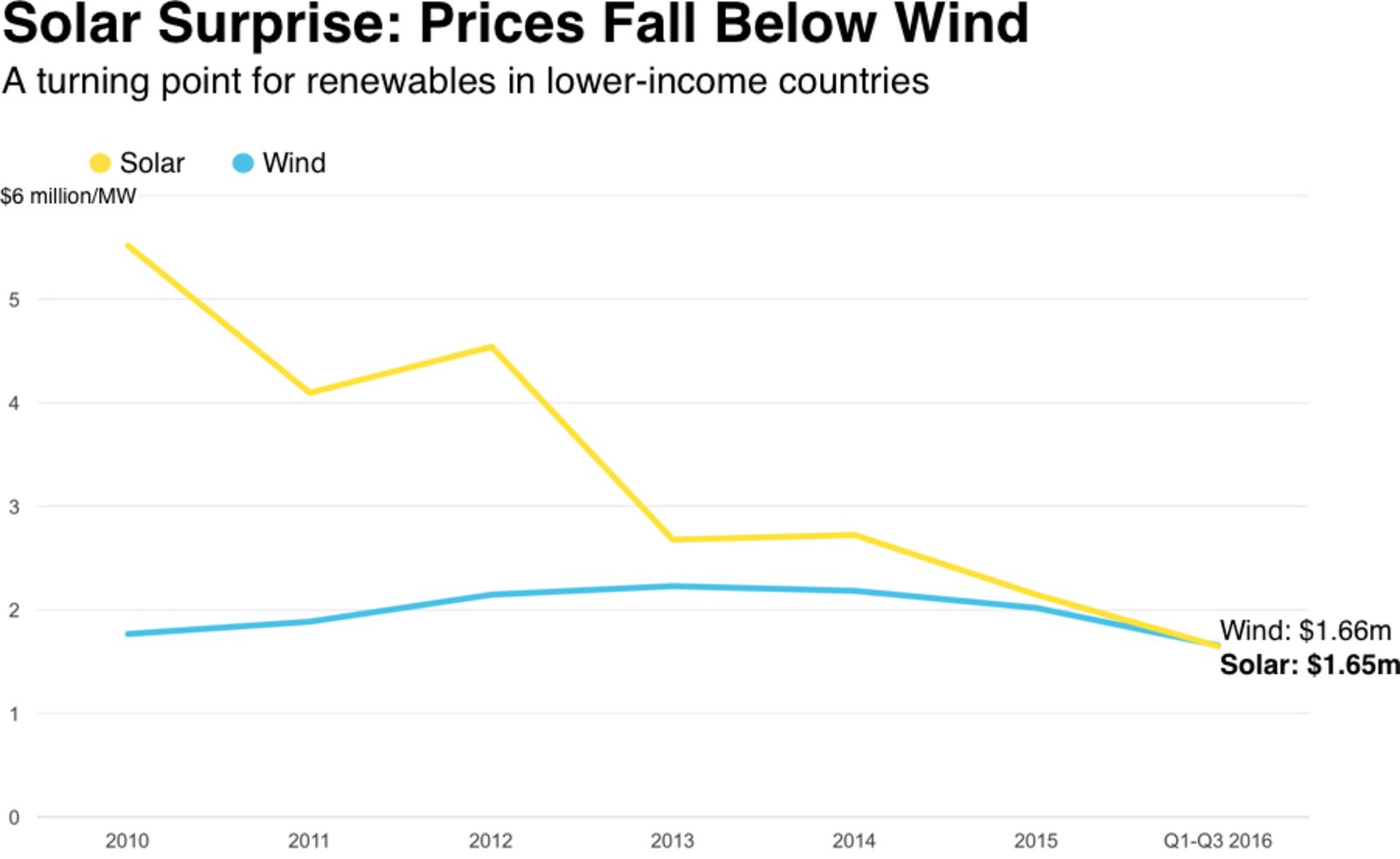While its natural gas percentage remained flat, and coal and nuclear decreased, Southern Company (SO) more than doubled its renewable energy generation percentage in one year. Maybe I’ll mention that at the annual shareholder meeting in May.
When:
10:00 a.m., ET
Wednesday, May 24, 2017
Where:
The Lodge Conference Center
Callaway Gardens
4500 Southern Pine Drive
Pine Mountain, GA 31822-2593
Event:
Annual Southern Company
Shareholder Meeting
Southern Company has all its SEC filings online, including the 2016 and 2017 “PRE 14A Proxy Statement – Notice of Shareholders Meeting (preliminary)”. Those include the date and place of the annual meeting, a letter from CEO Tom Fanning, and some interesting graphs and statistics.
 Among those graphs is one showing SO’s dividend ratcheting up almost every year
since 1948.
I’ll readily admit that’s why I own Southern Company stock.
Sure, I enjoy the annual meeting at Pine Mountain,
but one share would do for that.
And those dividends are why SO stockholders care about SO’s
energy mix.
Among those graphs is one showing SO’s dividend ratcheting up almost every year
since 1948.
I’ll readily admit that’s why I own Southern Company stock.
Sure, I enjoy the annual meeting at Pine Mountain,
but one share would do for that.
And those dividends are why SO stockholders care about SO’s
energy mix.
In his letter, SO CEO Tom Fanning emphasises natural gas:
2016 was a year of great growth and change as we continued to fill in the energy value chain to sustain growth.
- We proudly welcomed more than 6,000 new colleagues and over 4.5 million customers with the addition of Southern Company Gas (formerly AGL Resources Inc.).
- Our wholesale electric subsidiary, Southern Power Company (Southern Power), continued to acquire solar, wind and natural gas generation facilities, investing over $4.5 billion.
- We acquired a 50% equity interest in the Southern Natural Gas pipeline system.
- With the acquisition of PowerSecure International, Inc. (PowerSecure) and its strategic alliance with Bloom Energy for the deployment of fuel cell and battery storage technologies, we’re developing behind-the-meter infrastructure for customers across the country.
According to a Southern Company press release of 1 July 2016, SO paid $8 billion for AGL. According to Natural Gas Intel 11 July 2016, SO paid KMI $1.47 billion for Southern Natural Gas, plus assuming $600 million of debt. So SO spent upwards of $9.47 billion on natural gas pipeline companies in 2016. Yet the amount of natural gas in SO’s energy mix went down. Meanwhile, according to Tom Fanning’s letter, SO spent less than $4.5 billion on solar and wind, and the renewable energy percentage of SO’s mix more than doubled.
Maybe it would be worth evaluating what source of power is most cost-effective. Sure looks like it could be solar power.
Especially since we know in 2016 solar power added more new electric generating capacity than any other source, and total U.S. solar capacity is more than doubling every two years while coal and nuclear are crashing, and natural gas isn’t increasing even as fast as formerly projected.
As Tom Randall pointed out for Bloomberg 15 December 2016, World Energy Hits a Turning Point: Solar That’s Cheaper Than Wind: Emerging markets are leapfrogging the developed world thanks to cheap panels.
Almost two years before that, Tom Randall, Bloomberg, 14 April 2015, Fossil Fuels Just Lost the Race Against Renewables: This is the beginning of the end,
The race for renewable energy has passed a turning point. The world is now adding more capacity for renewable power each year than coal, natural gas, and oil combined. And there’s no going back.
Since SO seems to be doing better in renewable generation increase than even the very rapid U.S. solar exponential growth rate, and for less than half what SO spent on natural gas companies, maybe a smart Southern Company Big Bet would be on solar power.
Or not, and wait until some Indian or Brazilian company outcompetes SO in its home market.
-jsq
Investigative reporting costs money, for open records requests, copying, web hosting, gasoline, and cameras, and with sufficient funds we can pay students to do further research. You can donate to LAKE today!
Short Link:


